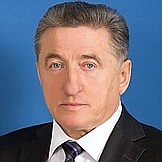Regional flags and emblems


PROFILE
Established 13 June 1934
Capital Voronezh
The Voronezh Region is part of the Central Federal District
Area 52,200 sq km
Population 2 259 600 (2025)
Ethnic groups
(2020 National Census, %)
Russian – 95,64
Other – 4,36
Administrative divisions (2024)
Municipal districts – 31
City districts – 3
Rural towns – 28
Rural districts – 414
Geography and climate
The Voronezh region is situated in the central East European Plain. It borders on the Belgorod, Kursk, Lipetsk, Tambov, Saratov, Volgograd and Rostov regions, the Lugansk People’s Republic. The main rivers are the Don, Khoper and Bityug. There are 828 rivers in the region.
The climate is temperate continental. January temperatures average –6.3°C, July temperatures average +21°C. Average annual precipitation is 500 mm.
There are specially protected natural areas in the region: the Voronezh State Biosphere Reserve and the Khopersky State Sanctuary.
Government
The legislative branch is represented by the Voronezh Region Duma, which is the permanent, representative and only body of legislative authority in the region.
The Voronezh Region Duma has 56 deputies elected for five years, with 28 of them running in single-mandate constituencies and the other 28 in the single electoral district in accordance with the electoral legislation.
The current Voronezh Region Duma was elected in September 2020. Its term expires in September 2025.
The executive branch is the Government of the Voronezh Region headed by Governor, which is the permanent executive authority; there are also some other executive authorities.
The Governor of the Voronezh Region is the region’s highest-ranking official, who runs the executive branch in the Voronezh Region, determines the system and structure of the bodies of executive authority in the region and forms the Government of the region. The Governor is elected for five years by Russian citizens who permanently reside in the region. The term of the incumbent Governor expires in September 2028.
Economy and natural resources
The Voronezh Region is one of Russia’s biggest industrial centres. The share of industrial production in the regional GDP is about 20%. Its major sectors are the food industry, electricity production, the chemical industry, manufacturing of electrical, electronic and optical equipment, non-metal mineral products, transport equipment including airplanes and fixtures, metals and metal products, machinery and equipment production. The region’s raw materials serve as a basis for the construction industry. The Voronezh Region is the leader in mineral fertiliser, car tyre and chemical rubber production in the Central Federal District.
The region has traditionally been among the country’s top agricultural producers (about 15% of the regional GDP). The region’s agriculture completely meets the needs of the population in the main agricultural products.
The regional authorities focus on agriculture development. The state programme of the Voronezh Region “Developing Agriculture, Food Production and Agri-Food Market Infrastructure” is underway in the region.
The overall agricultural volume index traditionally exceeds the Russian average value, which can be accounted for by the local government’s efforts in attracting investors and enhancing the region’s investment attractiveness.
Culture and tourism
The Voronezh Region is famous for its centuries-old traditions, a wealth of historical heritage, and original folk culture. Voronezh’s glorious history is connected with the name of Peter the Great. In 1696, Peter the Great chose Voronezh as a site for a shipyard as he was preparing to lead a military campaign to the Sea of Azov. Since then Voronezh has been considered the birthplace of Russian shipbuilding.
Voronezh is rightly considered the theatrical city. It has five state and two municipal theatres. Voronezh also hosts the Voronezh Opera and Ballet, the only musical theatre in the region, the famous Volkhovsky Puppet Theatre and the city’s youngest Chamber Theatre.
The wealth of the region’s cultural heritage is reflected in its historical diversity comprising almost 2,700 historical and cultural landmarks, complexes and monuments.
The Divnogorye Natural, Architectural and Archeological Museum-Reserve is a true gem of the Voronezh Region. The Kostenki State Archeological Museum-Reserve on the right bank of the Don in the Khokholsky District has brought world fame to the region.
Palaces and architectural landmarks are a unique part of the Voronezh Region’s heritage. The Oldenburg Palace Complex in the Ramonsky District is closely connected to the Romanov family.
The museum-estate of philosopher and poet Dmitry Venevitinov is open to visitors in Novozhivotinnoye, Ramonsky District.
Count Orlov founded the Khrenovskoy stud farm in the Bobrovsky District, where the world-famous Orlov Trotter was bred. The buildings there are among the best examples of classicism in architecture.
Another attraction in the Voronezh Region is the village of Kostomarovo in the Podgorensky District with one of Russia’s oldest functioning convents. Its main sight is the Saviour Cathedral carved in rock.
The Voronezh Region has 17 museums with six of them government-funded. Their main collections have over 340,000 items. The collections of the Kramskoi Museum astound with their variety – one can see anything here, from artefacts of Ancient Egypt, Greece, Western European painting of 15th−19th centuries to paintings by Russian and Soviet artists Nikolai Argunov, Karl Blyullov, Ivan Kramskoi, Isaac Levitan and Alexei Savrasov.


